When an employee submits their resignation, it's essential to respond thoughtfully and professionally. Acknowledging their decision not only reflects your appreciation for their contributions but also maintains a positive relationship moving forward. This simple yet impactful gesture can set the tone for their transition and future interactions. If you're looking for an effective template to guide your response, read on for our comprehensive examples!
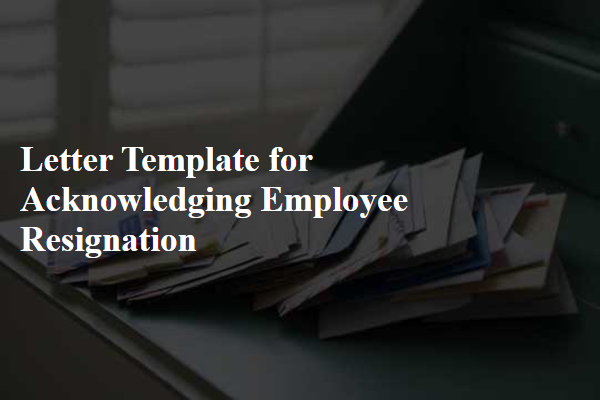
Professional tone and language
An employee resignation letter formally acknowledges the departure of a team member and expresses gratitude for their contributions to the organization. The letter typically includes the employee's name, position, and the effective date of their resignation. It might reflect on positive experiences, achievements, and the impact the employee had on the team or company. Furthermore, it could offer well wishes for the employee's future endeavors. This communication serves as an official record of the resignation and reinforces a positive relationship between the employee and the employer, which can be beneficial for future networking and references.
Gratitude and appreciation
An employee's resignation can prompt a formal acknowledgement of their contributions, fostering a positive company culture. Expressing gratitude deepens relationships within the organization. The acknowledgment should include specific instances of the employee's achievements, such as leading successful projects or exceeding sales targets, which boosts morale among team members. Recognizing their role in team events, such as quarterly meetings or team-building activities, highlights the importance of teamwork. Mentioning their positive impact on workplace culture and collaboration enhances the farewell sentiments. Lastly, wishing them well in their future endeavors promotes a lasting, professional relationship, essential in today's interconnected workplace environment.
Acknowledgment of final working day
Employee resignation leads to various procedural considerations. Final working days (last day of employment), often require clear documentation for both the employee and the human resources department. Notification periods (typically two weeks but may vary by company policy) must be acknowledged to ensure a smooth transition. Important details include collecting company assets (such as employee ID cards, company laptops, and access badges) and finalizing any outstanding tasks. This process ensures proper closure, paving the way for a respectful departure and positive future references for the employee. Proper acknowledgment of resignation also reinforces company culture and professionalism.
Transition and handover plans
Acknowledging employee resignation involves recognizing the individual's contributions within an organization and addressing the necessary transition and handover plans. Upon receiving notice of resignation, it is crucial to outline key logistical steps, such as reassignment of responsibilities to ensure continuity of work. Specific tasks include creating a comprehensive document detailing ongoing projects for successors, scheduling knowledge transfer sessions with relevant team members, and establishing a timeline for completing outstanding assignments before departure. Additionally, identifying an interim point of contact for urgent matters can facilitate a smoother transition period. Documenting these processes helps maintain operational efficiency and respects the employee's future endeavors while expressing gratitude for their service.
Contact information for future correspondence
Employee resignation is a significant event for any organization. Upon receiving a resignation letter, it is crucial to acknowledge it formally, ensuring the employee feels valued. This acknowledgment typically includes an expression of gratitude for the individual's contributions, specifying the last working day based on the notice period (usually two weeks). It is also essential to mention contact information for future correspondence, enabling ongoing communication regarding benefits, references, or other employment matters. Establishing this line of communication reassures the departing employee that they remain a valued part of the organization's community, even after their exit.

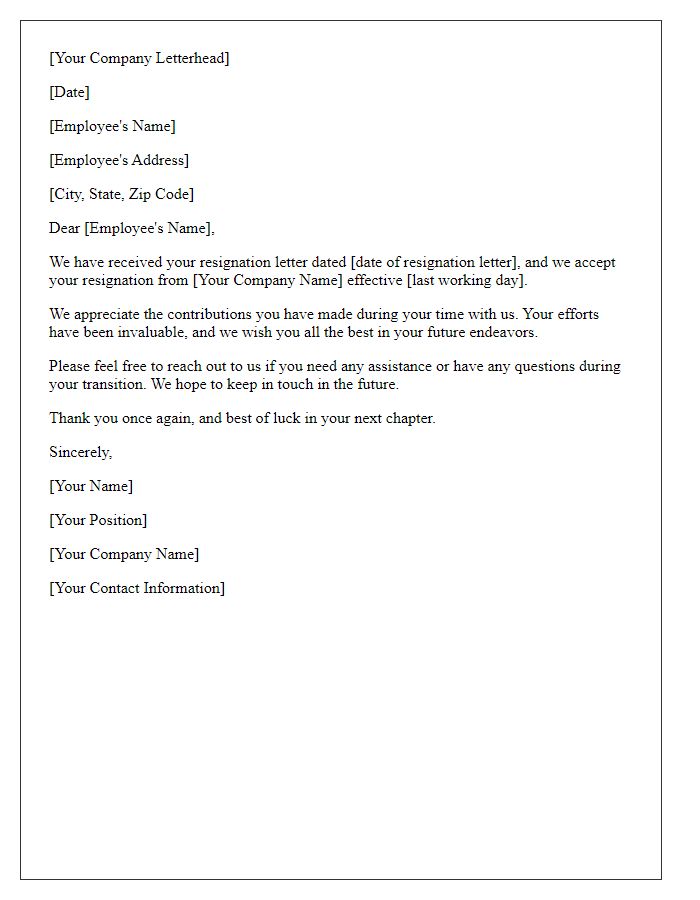
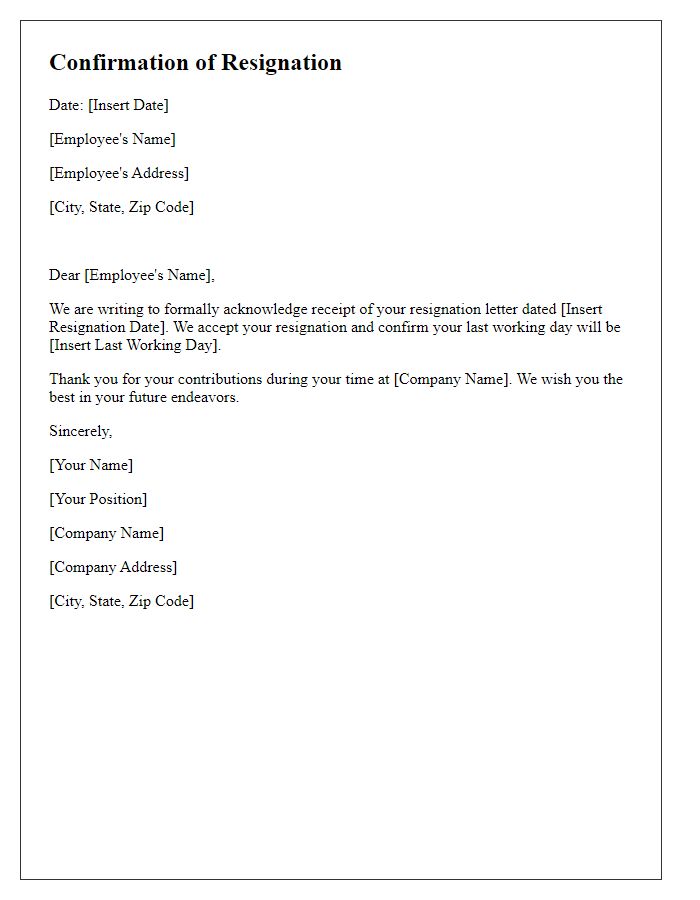
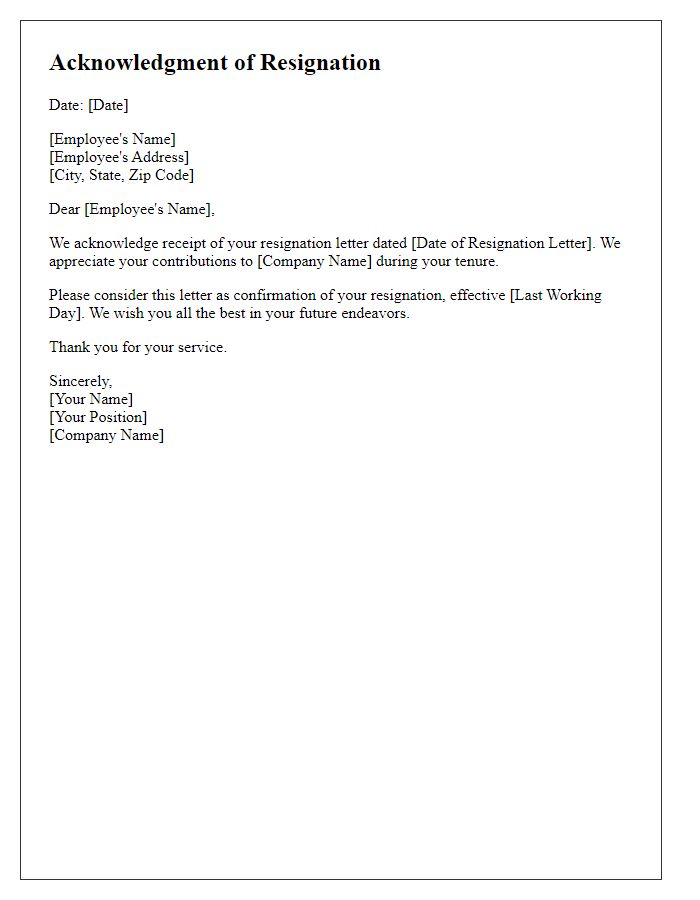

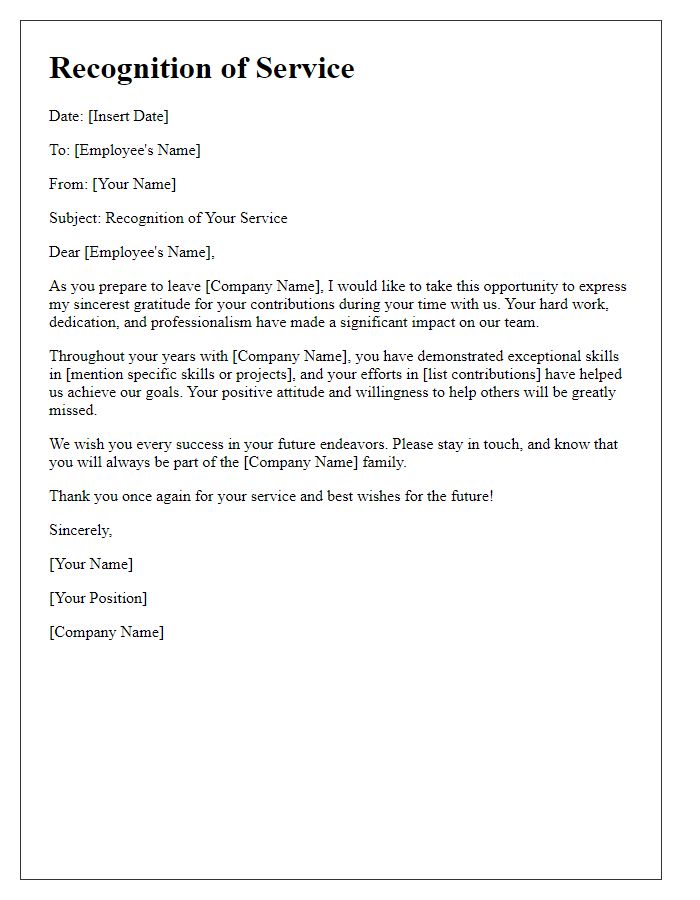
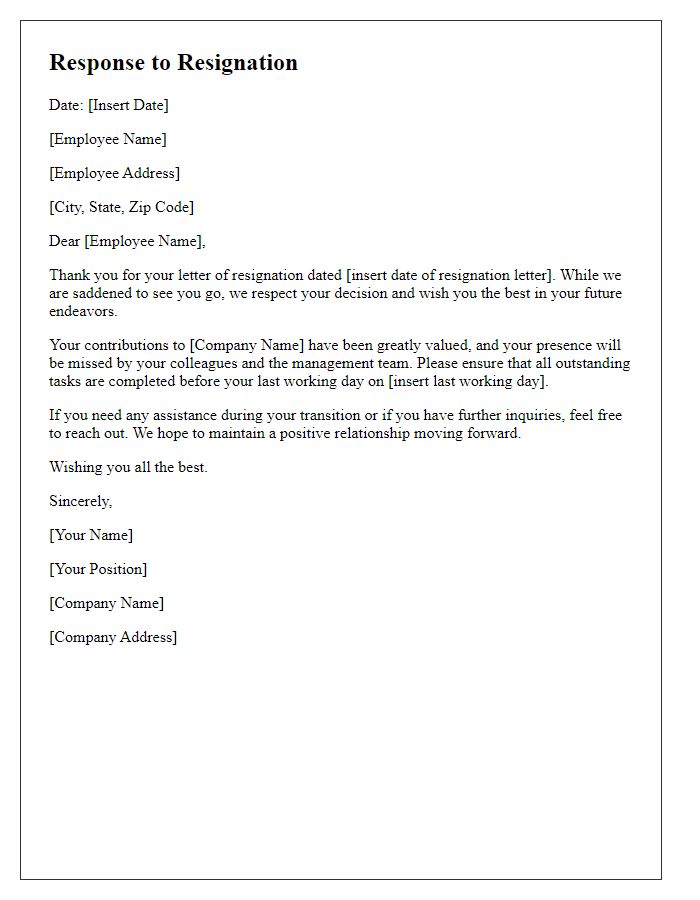
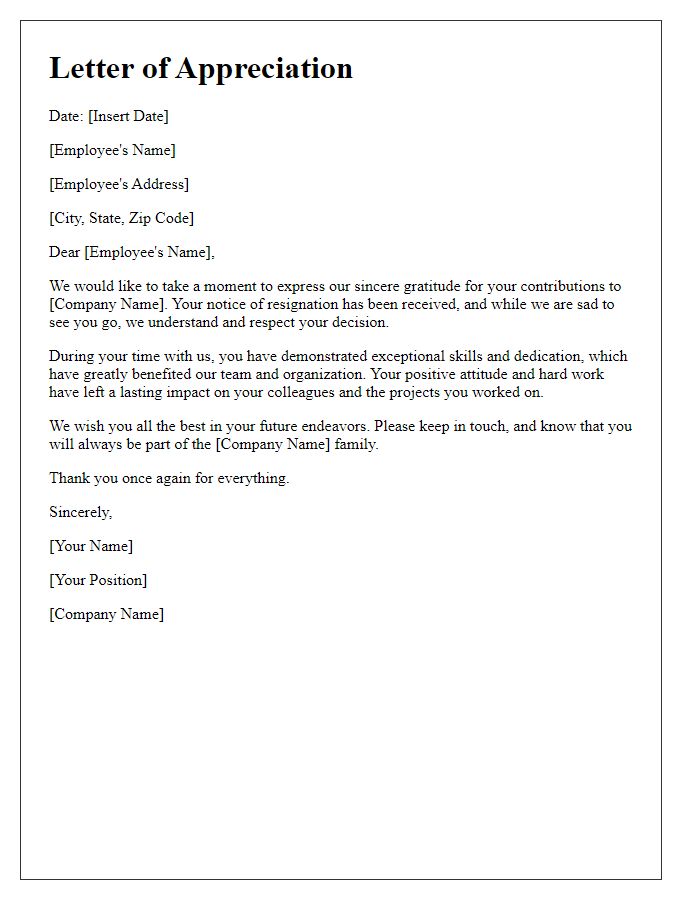
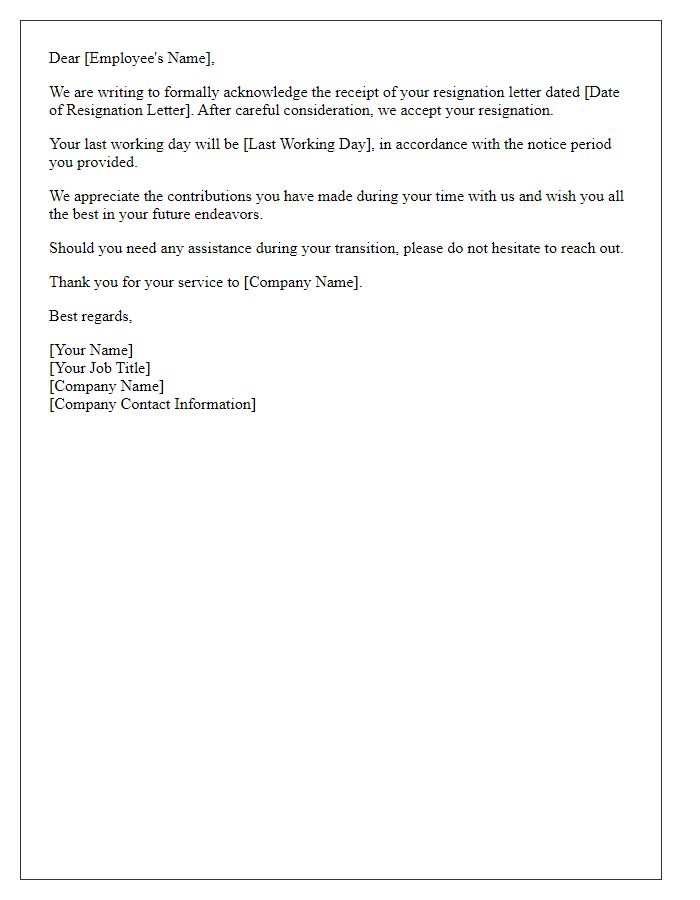
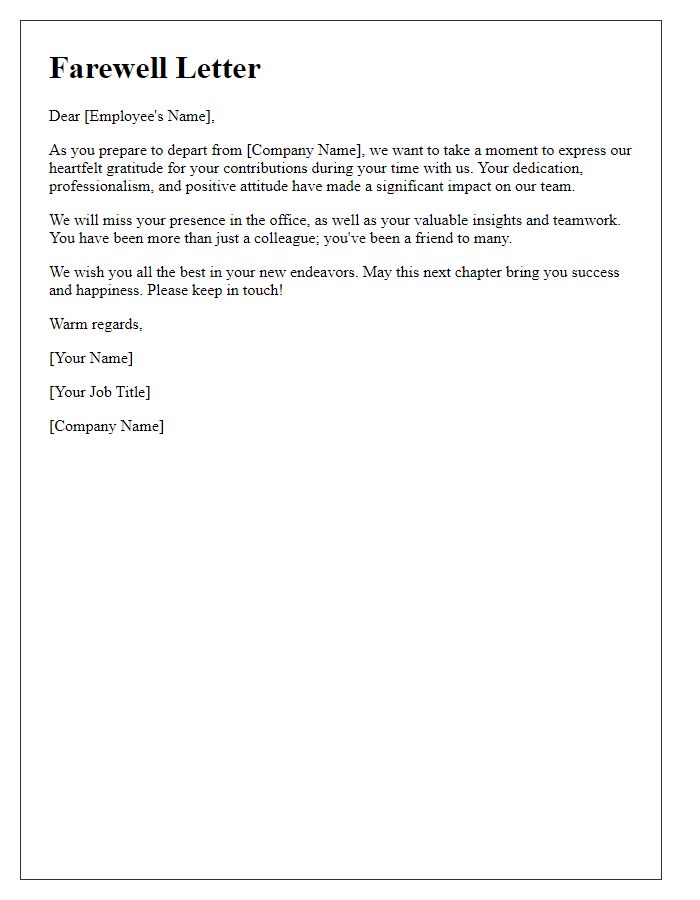
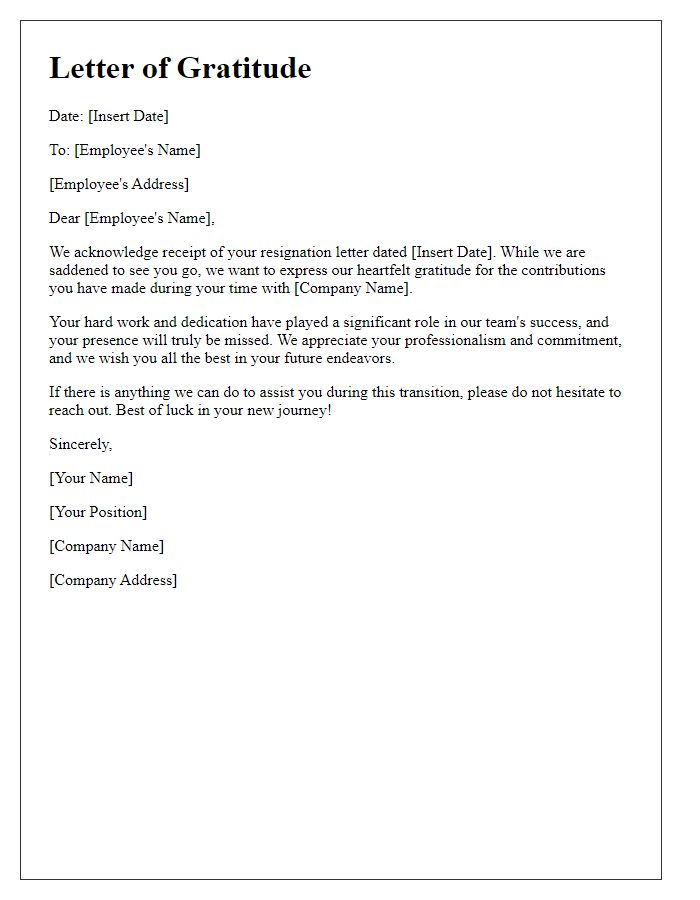

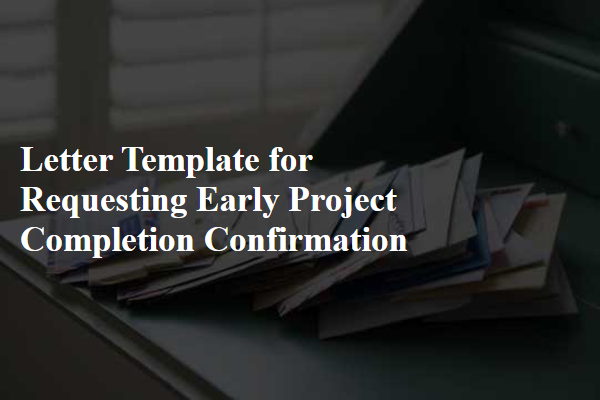
Comments